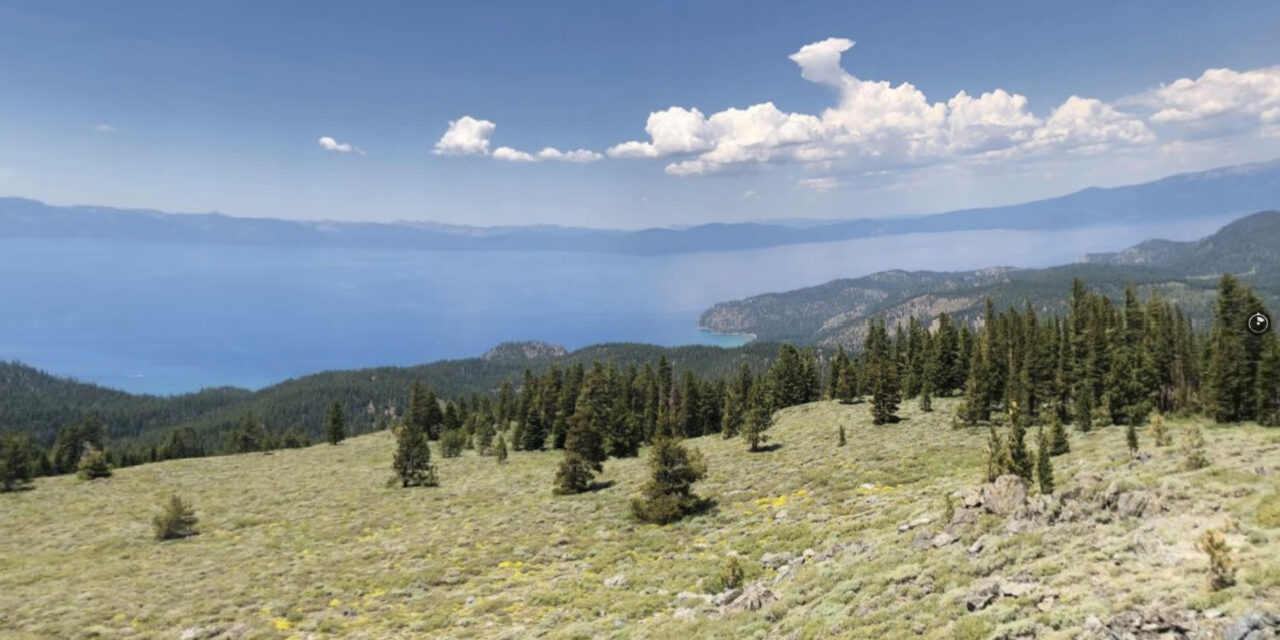- Tahoe’s Nevada Beach Tops the List of Hard-to-Book Campgrounds - 07/17/2024
- Cannabis Watershed Protection Program Cleans Up Illegal Grow Sites - 07/10/2024
- French Fire - 07/05/2024
Give Lake Tahoe back to the Washoe
The face of outdoor recreation is changing. Whether it’s in the ocean, on the trails, or at the crags, the movement for diversity and inclusion are slowly but surely transforming who participates in the outdoor lifestyle. This is more than just getting underrepresented groups into nature; it’s about sharing the wealth of public lands so everyone gets a chance to sip powerfully from the life-changing cup of adventure.
One important part of this change is the #landback movement. I first became aware of the hashtag after an article was published in the May 2021 issue of The Atlantic recommending returning the management of America’s national parks to Native Americans. Leech Lake, MN Ojibwe tribe member David Treuer wrote the article, and it sparked a viral movement to address our past.
Treuer writes, “We live in a time of historical reconsideration, as more and more people recognize the sins of the past still haunt the present. For Native Americans, there can be no better remedy for the theft of land than land. And for us, no lands are as spiritually significant as the national parks. They should be returned to us. Indians should tend—and protect and preserve—these favored gardens again.”
Inspired by this, I began to think about Lake Tahoe. About 78% of the land around Lake Tahoe is managed by the US Forest Service, and this includes over 150,000 acres of beaches, hiking areas, bike trails, and campgrounds known collectively as the Lake Tahoe Basin Management Unit (LTBMU).
What if the Washoe tribe became stewards of the Lake Tahoe Basin currently under management by the Forest Service? What if we transferred management of this sacred area into the hands of the Washoe? Who is better qualified to care for Tahoe than the tribe that managed this stunning landscape for thousands of years before American colonists forced them into servitude and took their land?
Today the Washoe tribe consists of about 1,500 members living in the vicinity of Lake Tahoe and more are spread throughout the US. There are scientists, land conservation experts and environmentalists within their tribal membership. Coupled with the wisdom of their ancestors, I would argue that these Washoe land use experts can do a better job of managing Tahoe than the Forest Service.
It’s not a stretch to say that Native wisdom has proven effective in modern land management strategies. In Leonie Sherman’s article in this issue of ASJ (page 12), she details how California fire management has come full circle and now embraces ancient Native intentional burning practices. Again, experience should count for something and Natives have been effectively managing large areas of land for millennia.
Big changes are happening. This is a time in history where people are questioning basic assumptions. The assumption that the Forest Service is better suited to care for Lake Tahoe than the Washoe Tribe should be challenged as well.
With a focus on crop production, the United States Department of Agriculture — which currently manages Lake Tahoe — was founded in 1862 when about half of all Americans lived on farms. As America expanded to the west, the United States Forest Service (USFS) was created in 1905 to “… provide timber for the nation’s benefit.”
With a history of mining, cattle grazing, and logging, the USFS mission has evolved over the decades to include recreation and conservation. In the early 1970s the USFS created the LTBMU. From the USDA to the USFS to the LTBMU what these acronyms point to is a history of resource extraction and exploitation.
As Americans spread west to pursue our “Manifest Destiny,” history shows we killed the tribes and extracted wealth from the land in the form of gold, silver, salmon and trees. Times have changed, but the same government entities are running the show.
With the Washoe in charge of Lake Tahoe, a new agency with a new mission becomes possible. With a history of land stewardship going back thousands of years, a philosophy of connecting with the land could replace the current practice of using the land. The best practices of the LTBMU could be preserved within a better framework by those most qualified to care for the sacred lake the Washoe call “Da ow ga.”
According to the USFS website, “Encroachment” is the term used to describe the process by which the Washoe lost Lake Tahoe to settlers between 1848 and 1863. Supported by the US government, “these settlers claimed land with increasing intensity until 1863 when the Washoe had lost all of their lands in the Lake Tahoe Basin.”
We can’t change the past but we can certainly make better choices for our future and the future of our children. Thanks for reading ASJ. Let me know your thoughts.
— Matt Niswonger












